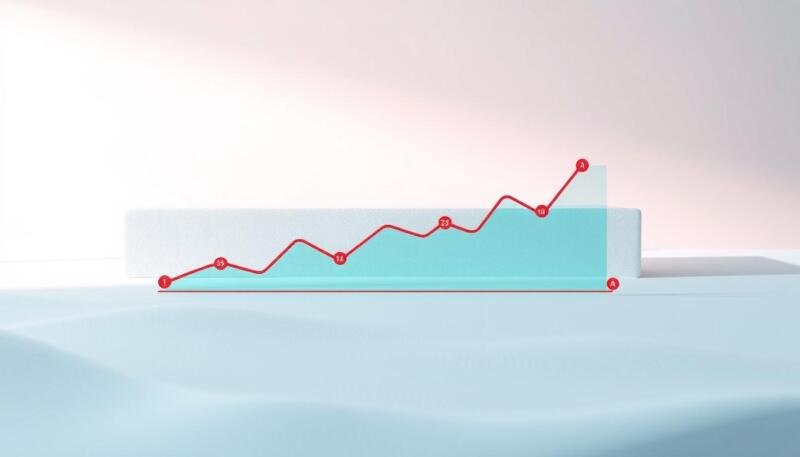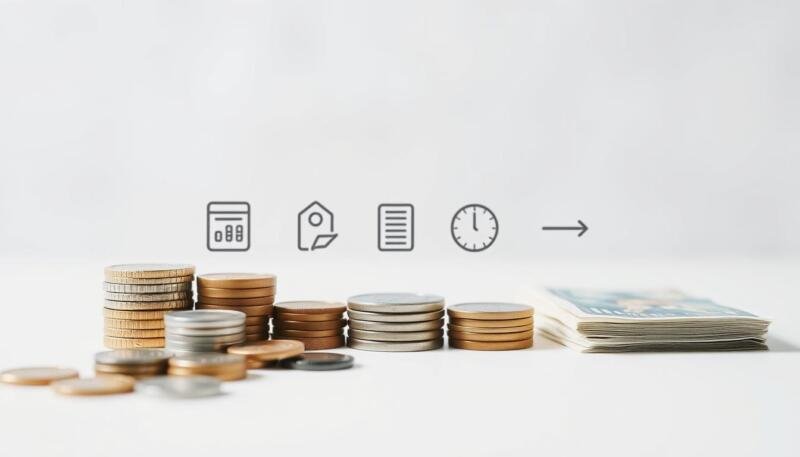
Best high-yield savings accounts USA 2026

I once watched a friend move a small emergency fund after spotting a 4.51% APY on an Axos ONE Savings notice. She booked a quiet Saturday, compared a few bank offers, and opened an account that fit her timeline and balance.
That quick switch taught her two lessons: headline APY matters, and so do minimums and access. In this guide you’ll see top rates like 4.51% from Axos and 4.20% from Openbank, plus options with a $1 minimum via Raisin for Western Alliance Bank.
You’ll get crisp comparisons so you can match your deposit habits and checking setup. We’ll also cover how the Fed’s Sept. 2025 cut could influence rates in 2026 and what that means for your interest over time.
By the end, you’ll know which account fits your goals, which fees to avoid, and the simple steps to fund a new account with confidence.
- Why high-yield savings still matter right now
- Editor’s top picks for 2026 high-yield savings
- Best high-yield savings accounts USA: compare APYs, minimums, and perks
- Strong runners-up you should also consider
- Savings plus banking bundles: SoFi, EverBank, UFB, and E*TRADE
- Rate trends to watch in 2026
- Money market accounts vs high-yield savings: which suits you?
- Traditional savings account vs high-yield: the real interest rate gap
- High-yield savings vs certificates of deposit
- Spotlight: U.S. Bank relationship savings and Elite Money Market
- How to choose the right savings account for your money
- Opening your new savings account: a quick checklist
- Make your APY work harder: practical strategies
- Safety first: FDIC/NCUA insurance and partner-bank models
- Common fees and limits to watch
- Your next step to earn more interest on your savings
Why high-yield savings still matter right now
The Sept. 17, 2025 Fed cut to a 4.00%–4.25% target range shifted the tone for deposit yields, but it did not erase the value of shopping rates. You still benefit by keeping cash where the posted annual percentage yield outpaces the national average.
Present rate landscape after the Fed’s 2025 cut
Savings market moves tend to lag the Fed. Many banks trim account interest rates gradually rather than all at once. For example, Ally’s APY slid from 3.80% in Jan. 2025 to 3.40% by Sept., showing a steady drift lower.
What “high-yield” means compared to the national average APY
A 4.00% APY versus the 0.40% national average can add noticeable interest on the same balance. Online banks often offer higher posted rates because they have lower overhead and fewer fees.
- Why it matters: higher APY = more earned interest over time.
- Banks usually change rates gradually, giving you time to act.
- Watch rate moves and keep funds liquid to capture better offers.
| Scenario | APY | Effect on $10,000 | Typical source |
|---|---|---|---|
| National average | 0.40% | $40 / year | Branch banks |
| Strong online APY | 4.00% | $400 / year | Online banks |
| Ally (Jan→Sept 2025) | 3.80% → 3.40% | $380 → $340 | Retail online bank |
Editor’s top picks for 2026 high-yield savings
Below you’ll find the top rate options editors recommend for different deposit sizes and goals. Each pick shows the posted apy, opening or balance minimums, and what to watch for when you fund the account.
Axos ONE Savings 4.51% APY
Why it stands out: A headline 4.51% apy can boost earnings, but you must keep at least $1,500 to earn that tier. This is best if you can hold a mid-sized balance while keeping funds liquid.
Openbank High Yield Savings 4.20% APY
Openbank posts 4.20% apy with a $500 minimum to open. Rates may vary by ZIP and the product is FDIC-insured through Santander. It’s a solid option if you want a modest opening deposit and online access.
Western Alliance Bank via Raisin 4.10% APY
You can access Western Alliance’s 4.10% apy through Raisin with just $1 to start. Promotions may include a bonus with code EASY. Use this if you want to climb yields with minimal upfront money.
CIT Bank Platinum Savings 3.85% APY
This one requires a $5,000 balance to hit the 3.85% apy. There’s a $100 minimum to open and no monthly fee. It makes sense when you have a larger balance and want a stable rate for that tier.
Forbright Growth Savings 4.25% APY
Forbright offers 4.25% apy with a $0 minimum and an eco-friendly mission. It’s a good fit if you want solid yield and low friction to open the account.
"Headline rates matter, but the minimums and fee rules tell you how much you’ll actually earn."
| Product | APY | Minimum to open / to earn top APY | Notes |
|---|---|---|---|
| Axos ONE Savings | 4.51% | $0 open / $1,500 for top APY | Strong headline, needs mid-size balance |
| Openbank High Yield | 4.20% | $500 to open | Rate varies by ZIP; FDIC via Santander |
| Western Alliance via Raisin | 4.10% | $1 to open | Promos available; marketplace access |
| CIT Bank Platinum | 3.85% | $100 open / $5,000 for top APY | No monthly fee; bonus on larger balances |
| Forbright Growth | 4.25% | $0 to open | Eco-focused, easy to fund |
Want a side-by-side comparison before you apply? Use this guide to compare top APYs and confirm current rates and offer details before you deposit.
Best high-yield savings accounts USA: compare APYs, minimums, and perks
Look at APY tiers, deposit rules, and digital perks to match an account to your cash routine.
APY highlights and minimum balance requirements
Axos posts 4.51% APY for tiered balances. Forbright offers 4.25% with no opening minimum. Openbank lists 4.20% but needs $500 to open. Western Alliance via Raisin gives 4.10% with a $1 entry and promo codes. CIT reaches 3.85% at higher balances (about $5,000).
Bonuses and promotions worth noting
Watch for limited-time offers. Western Alliance via Raisin may run $75–$1,000 bonuses with code EASY. Discover has an up-to-$200 bonus (expires 03/12/2026) for qualifying deposits. These can boost early interest but read deposit thresholds and hold periods first.
Mobile app strength, ATM access, and digital features
Most banks support mobile check deposit, instant transfers, and alerts. A few platforms reimburse ATM fees or link easily to a checking account for fast moves. Prioritize apps with good reviews if you use mobile tools to manage your balance and transfers.
| Product | APY | Minimum to open / to earn top APY | Notable perk |
|---|---|---|---|
| Axos ONE Savings | 4.51% | $0 open / $1,500 for top APY | Strong headline APY |
| Forbright Growth | 4.25% | $0 to open | Easy funding; eco focus |
| Openbank High Yield | 4.20% | $500 to open | FDIC via Santander |
| Western Alliance via Raisin | 4.10% | $1 to open | Promo codes (EASY) & marketplace |
| CIT Bank Platinum | 3.85% | $100 open / $5,000 for top APY | No monthly fees; larger-balance bonus |
Strong runners-up you should also consider
Not every top pick needs to be about the headline APY. You may prefer a familiar branch, ATM perks, or a broader financial ecosystem that makes moves and transfers simple.
Capital One 360 Performance Savings 3.40% APY, $0 minimum
Why consider it: Branch access and a solid mobile app make this bank easy to use if you like occasional in-person service. No minimum lets you start small and grow.
Synchrony High Yield Savings 3.80% APY with ATM fee reimbursements
Why consider it: Synchrony pairs a competitive apy with ATM fee reimbursements, which can reduce costs when you need cash from a savings balance.
American Express High Yield Savings 3.50% APY with broader ecosystem
Why consider it: This option links to the AmEx ecosystem, making transfers and rewards checking easier for cardholders. It has a $0 minimum to open.
Marcus by Goldman Sachs 3.65% APY, consistent track record
Why consider it: Marcus is known for steady rates and clear terms. If you want reliable interest without frequent surprises, it’s worth a trial.
Barclays Tiered Savings 3.90% APY and online tools
Why consider it: Barclays offers tiered rates and strong web tools that help you manage transfers and balance goals. Look for limited-time promos that may boost first-year returns.
| Product | APY | Minimum | Key perk |
|---|---|---|---|
| Capital One 360 Performance | 3.40% | $0 | Branch access; easy linking to checking |
| Synchrony High Yield | 3.80% | $0 | ATM fee reimbursements |
| American Express High Yield | 3.50% | $0 | AmEx ecosystem and rewards checking links |
| Marcus by Goldman Sachs | 3.65% | $0 | Steady rates; simple online management |
| Barclays Tiered Savings | 3.90% | $0 | Robust online tools; promo potential |
Quick take: All five have $0 minimums, so you can test one or two with small deposits. Compare the apy, the app, and any fees before you move a larger balance. That helps you match the right account to your money habits.
Savings plus banking bundles: SoFi, EverBank, UFB, and E*TRADE
Bundled checking and savings options can raise your overall APY while keeping day-to-day banking simple. Below we walk through four bundle-friendly banks so you can weigh convenience against qualifying rules and fees.
SoFi Checking and Savings up to 4.50% with direct deposit and Plus
What you get: SoFi can boost your savings APY to 4.50% when you enroll in SoFi Plus and set up qualifying direct deposit. There’s a $0 minimum and no monthly maintenance fee. Its checking earns about 0.50% APY, which helps your everyday balance earn too.
EverBank Performance Savings ecosystem for liquid and long-term money
What you get: EverBank’s Performance Savings posts a competitive 4.05% APY. The bank also offers CDs, money market options, and interest checking so you can mix short-term liquidity with goal-focused certificates of deposit.
UFB Portfolio Savings strong app and service
What you get: UFB’s Portfolio Savings pays about 3.90% APY and shines on mobile. If you move money by phone and value quick support, UFB’s app and service ratings matter for daily transfers and balance checks.
What you get: E*TRADE’s Premium Savings (around 3.75% APY) pairs smoothly with brokerage cash management. It’s useful if you sweep proceeds from trades into an interest-bearing vehicle for easy reinvestment.
"Bundles trade convenience for conditions read qualifying rules so fees don’t eat your yield."
| Bank | Approx. APY | Key bundle perk | Typical minimum / fees |
|---|---|---|---|
| SoFi | Up to 4.50% | SoFi Plus + direct deposit boosts APY; $0 minimum | $0 minimum; no monthly fee |
| EverBank | 4.05% | Performance Savings plus CDs & money market | $0–$100 typical; check product for fees |
| UFB | 3.90% | Top mobile app and customer service focus | $0 minimum; avoid maintenance fees |
| E*TRADE | 3.75% | Easy cash sweeps from brokerage | $0 minimum; fees vary by service |
Rate trends to watch in 2026
Expect steady nudges lower in bank yields through 2026 as markets absorb last year’s policy shift. The Sept. 17, 2025 Fed cut set a tone that usually leads to softer posted interest rates for deposit products over the following months.
Why APYs may drift lower from 2025 levels
When the Fed eases, banks often trim yields to reflect cheaper funding costs. Ally’s APY moved from 3.80% in Jan. 2025 to 3.40% by Sept., a good example of gradual change rather than a sudden collapse.
How banks adjust account interest rates over time
Banks and online platforms recalibrate an account interest rate based on deposit inflows, funding needs, and competition. Some institutions cut quickly to protect margins; others lag to retain customers, creating short windows to switch.
- Watch the spread between headline APY and your long-term average yield — monthly dips can lower what you earn across time.
- Set alerts and review rates quarterly so you can move money when a clear better offer appears.

Money market accounts vs high-yield savings: which suits you?
Deciding where to park emergency cash often comes down to how you need to access it and what you’ll pay to hold a balance. A money market account typically adds check-writing and a debit card. That flexibility can replace small withdrawals from checking.
Money market access: checks and debit flexibility
Money market accounts let you write checks and use a card for limited transactions. That beats many online savings choices when you need occasional spending access.
Monthly maintenance fees and minimum balance trade-offs
Market account minimums often run higher. Some banks charge monthly maintenance unless you meet a minimum balance or set up direct deposit. Compare the math: a slightly lower apy after fees can equal less take-home interest than a fee-free savings option.
- Use a no-fee checking to pair with a savings product for fast transfers.
- Keep an emergency fund in a liquid savings if you want max interest with simple online transfers.
- Choose a money market account if check access and convenience outweigh a small APY gap.
| Feature | Money market account | High-yield savings |
|---|---|---|
| Access | Checks + debit card | Online transfers; limited withdrawals |
| Typical minimum | Higher minimum balance | Lower or no minimum |
| Monthly fees | Possible without minimum | Often none |
| Interest / APY | Competitive; sometimes lower after fees | Often stronger net APY |
Traditional savings account vs high-yield: the real interest rate gap
Your old branch savings may feel safe, but the interest gap is real and measurable.
At a 0.40% national average, a $10,000 balance earns about $40 in a year. At a 4.00% APY the same balance earns roughly $400. That difference is simple math and meaningful cash.
Higher APY compounds and grows your money faster even if you add nothing else. Large national banks often pay the least because branch costs are higher. Online banks can pass savings to customers as better rates.
Convenience sometimes wins. If you value in-person help, keeping a checking and a traditional savings account at the same bank can make sense. You can still move idle funds to a better-paying option for growth.
Quick tips before you switch:
- Check fees and minimums so net interest isn’t reduced.
- Automate transfers from your checking to your new account each month.
- Monitor rate changes and set alerts to protect your APY.
| Scenario | APY | Yearly interest on $10,000 |
|---|---|---|
| Traditional bank rate | 0.40% | $40 |
| Online alternative | 4.00% | $400 |
| Net after fees (example) | 3.50% | $350 |
"Moving cash doesn't mean losing convenience it can mean earning more while keeping easy access via linked accounts."
High-yield savings vs certificates of deposit
When you weigh locking cash for a set term, the trade-off is steady yield versus ready access.
Annual percentage yield stability vs liquidity needs
Certificates often deliver a fixed APY for the term you choose. That predictability helps when you plan for a known purchase or milestone.
By contrast, liquid savings have variable rates and let you move money quickly. That flexibility protects an emergency cushion but can mean fluctuating annual percentage yields.
When a CD makes sense for your savings goals
If you won’t need certain funds for months or years, a certificate deposit can beat typical savings rates. U.S. Bank, for example, offers CDs with a $500 minimum and daily compounded interest credited monthly.
Consider these points when comparing options:
- Term length and early withdrawal penalties.
- How interest is compounded and credited.
- Whether laddering terms can give partial access while raising overall yield.
- How much balance to keep liquid for emergencies.

| Feature | Liquid savings | Certificate deposit |
|---|---|---|
| Access | Easy transfers; limited monthly withdrawals | Locked until maturity; penalties for early withdrawal |
| Rate type | Variable APY | Fixed APY for the term |
| Minimums | Often $0–$100 | Commonly $500 (varies by bank) |
| Best use | Emergency funds and short-term goals | Time-bound goals (12–24 months+) and laddering |
Quick checklist: pick terms that match your timeline, keep a liquid buffer, consider laddering, and mark CD maturity dates to reassess rates and redeploy funds.
Spotlight: U.S. Bank relationship savings and Elite Money Market
U.S. Bank ties product perks to a Combined Qualifying Balance that can lift your yield without extra risk.
You can bump Smartly Savings' rate by linking Bank Smartly Checking, Safe Debit, or a Smartly Visa Signature Card. Tiers are based on the daily CQB and adjust month to month.
How CQB tiers work: CQB is calculated daily from linked balances and averaged for the month. When your CQB moves up, your account interest rate may improve. It won't drop mid-month if you already reached a higher tier.
Elite Money Market promotional APYs and balance rules
The Elite money market posts a promotional APY when you deposit at least $25,000 within 30 days and keep a $25,000 daily balance. The market account has a $100 minimum to open.
If you don't maintain the promo threshold, standard tiers apply. Balances under $10,000 can earn as little as 0.01% APY, so watch your band.
Waiving monthly maintenance and managing fees
Smartly Savings carries a $5 monthly maintenance fee that can be waived when you link eligible products or meet minor balance rules. That helps protect the interest you earn.
- Monitor CQB daily and set alerts so balances don't slip below tier thresholds.
- Use the $25,000 promo window only if you plan to keep that balance long term.
- Confirm FDIC coverage—U.S. Bank insures deposits up to $250,000 per ownership category.
| Product | Promo requirement | Minimum to open | Note |
|---|---|---|---|
| Smartly Savings | Link eligible products; CQB tiers | $0 | $5 monthly maintenance can be waived |
| Elite Money Market | $25,000 deposit within 30 days & $25k daily | $100 | Promo APY while threshold met; lower standard tiers otherwise |
| FDIC protection | Up to $250,000 | N/A | Per depositor, per ownership category |
"Relationship balances can trade convenience for a rate boost track tiers so fees don't erode your yield."
How to choose the right savings account for your money
Pick an account that matches how you use money, not just whichever rate looks highest. Start with four simple checks that reveal how much you'll actually earn and how easy the account is to use.
Evaluate APY, fees, minimums, and access to funds. Look past a headline apy to monthly charges, required minimums, and withdrawal limits. Small fees or a high minimum can cut your first-year interest sharply.
Deciding between online and branch access. Online platforms usually post stronger apy and lower fees. Branch banks give in-person help and easy cash handling. Match your comfort with digital tools to the service model.
- Check transfer speeds to and from checking so you can access emergency money fast.
- Review mobile app reviews, security features, and alerts you will actually use.
- Compare recent rate moves and variable apy histories before you move large balances.
| Factor | Online | Branch |
|---|---|---|
| Typical APY | Higher | Lower |
| Fees & minimum | Lower | Higher |
| Access | Fast transfers | In-person service |
Quick checklist: pick two finalists, confirm fees, test transfers from your checking, then open the one that fits your balance and habits. Learn more in a concise pros and cons guide and compare options with this savings comparison.
Opening your new savings account: a quick checklist
Starting a new savings account is faster when you line up your SSN, ID, and funding path first. Prepare to enter your Social Security number, a government photo ID (driver’s license or passport), and a current address so you can open account online in minutes.
IDs, funding options, and initial deposit tips
Required documents: SSN, government ID, phone, and email. Some banks also ask for employment details for verification.
Funding methods: ACH transfer, mobile check deposit, wire, or external transfer. ACH is free but can take 1–3 business days. Wires are fast but may carry fees.
Initial deposit: Confirm the minimum to qualify for a posted APY or a promo. For example, some Discover bonuses need a specific deposit and an offer code and require the account to remain open until the bonus posts.
Linking checking and setting up direct deposit or transfers
Link your checking to enable instant or one-day transfers when supported. Set up a split direct deposit or automatic transfers to build balance without thinking about it.
Timing & holds: External transfers typically clear in 1–3 days; mobile checks may have holds. Plan around promotional windows so deposits count for bonuses or rate tiers.
- Set low-balance and transfer alerts in the app.
- Keep the account open until any bonus posts to avoid losing the offer.
- Watch for monthly fees in the first 60 days and meet minimums to avoid them.
| Step | What to have ready | Typical time |
|---|---|---|
| Verify ID | SSN + driver’s license or passport | Instant |
| Fund initial deposit | ACH, wire, or mobile check | Same day–3 days |
| Link checking | Account & routing numbers | 1–3 days (micro-deposits) |
| Set preferences | Auto-transfer, alerts, direct deposit | 5–10 minutes |
"Gather documents, confirm minimums, fund within promo windows, and link your checking for fast transfers."
Make your APY work harder: practical strategies
Set up a few habits that nudge your APY higher without daily effort. With automated transfers, timed deposits, and tier planning, you can unlock better yield while keeping cash available for emergencies.
Automate transfers and hit thresholds. Schedule weekly or monthly transfers to build a balance that qualifies for higher rates, like CIT’s $5,000 tier. Automation removes guesswork and helps you meet balance thresholds consistently.
Map bonus windows and split funds. Track promo rules—Discover’s $150/$200 offers require meeting a deposit threshold and an offer code within 45 days. Use one small account for bonus-timed deposits and another online savings for steady interest.
Keeping emergency money liquid while earning interest
Keep your emergency fund in a liquid online savings product that pays competitive interest. Use multiple transfer dates to smooth cash flow and avoid overdraft fees.
- Consolidate when a tier makes sense; diversify when promos outpace a single rate.
- Track effective yield after any fees so you know the true return.
- Set alerts and a short backup list of banks to pivot quickly if an APY drops.
Review rates quarterly and adjust transfers or deposits as needed. For a quick snapshot of recent national moves and context, see this current national rate trends.
"Automate the routine, time the promos, and keep liquidity at the front of your plan."
| Action | Why it helps | When to act |
|---|---|---|
| Automate transfers | Build balances to reach APY tiers | Monthly |
| Use promo window | Capture bonus without extra risk | Within 45 days (example) |
| Quarterly review | Compare effective yield after fees | Every 3 months |
Safety first: FDIC/NCUA insurance and partner-bank models
Before you move funds, confirm how federal insurance protects your deposits. That simple check keeps large sums safe and shows how to spread money across institutions without losing coverage.
Understanding deposit insurance limits per ownership category
FDIC and NCUA coverage protect up to $250,000 per depositor, per insured bank, per ownership category. That means individual, joint, and trust holdings each get their own cap.
How marketplaces and partner banks work
Marketplaces like Raisin place your deposits at partner banks. Each partner keeps its own FDIC limit, so splitting deposits across partners can extend your protection.
- Check how Openbank combines deposits with Santander for insurance limits.
- Confirm a bank’s FDIC or NCUA status on its site before you move a deposit account.
- Track interest posting and statement dates so posted funds don’t push you over a cap unexpectedly.
| What to check | Why it matters | Quick action |
|---|---|---|
| Insurance status | Confirms protection | Verify FDIC/NCUA lookup |
| Ownership category | Expands insured limits | Use joint or trust titling if needed |
| Partner marketplace | Multiple banks, separate caps | Review partner list and limits |
"U.S. Bank and other major banks disclose FDIC coverage check your statements and the bank’s disclosures before you move a large balance."
Common fees and limits to watch
Fees and transfer rules determine how much of your interest you actually keep. Read fee schedules for withdrawal caps, monthly maintenance, and paper statement charges before you move money.

Withdrawal limits, ATM access, and external transfer rules
Many savings limit certain withdrawals to six per month. That can affect how often you shift cash to checking.
ATM access varies by bank; Synchrony reimburses some ATM fees and U.S. Bank uses MoneyPass for fee-free withdrawals at select machines.
External transfers can take 1–3 business days and some banks impose daily transfer caps. Plan timing for big deposits or withdrawals.
Monthly fees, paper statements, and excess transaction charges
Monthly maintenance fees appear on some accounts but are often waived if you meet a minimum balance or link a checking product.
Paper statements, cashier services, and excess transaction fees can add up. Avoid them by setting alerts and choosing electronic statements.
"Small, recurring fees cut your effective APY more than occasional rate moves watch the fine print."
| Fee or rule | Typical effect | How to avoid |
|---|---|---|
| Withdrawal limit (monthly) | Limits transfers to checking; possible excess fee | Use linked checking or schedule fewer transfers |
| ATM fees | Out-of-network charges can reduce interest | Pick banks with fee reimbursement or MoneyPass |
| Monthly maintenance | Reduces net interest if not waived | Meet minimum balance or link qualifying products |
| Paper statement fee | Small recurring charge | Switch to e-statements |
Fee-avoidance checklist: link a checking for fast transfers, set balance alerts, pick e-statements, and confirm minimums before deposit. These steps keep more interest in your pocket.
Your next step to earn more interest on your savings
Pick two finalists one that maximizes APY and one that suits everyday use and open account for the one that fits you best this week. This quick move starts earning interest on idle money without much fuss.
Link your checking, schedule the initial deposit, and automate small transfers to grow your balance steadily. Confirm any bonus rules so a promo posts on time.
Set simple rate alerts and a quarterly check‑in to keep your APY competitive. Verify fee waivers and spread funds across banks for FDIC protection while you test each app.
Apply, fund, and then verify the posted rates and features in your new dashboard. The sooner you act, the more your money earns over time.
If you want to know other articles similar to Best high-yield savings accounts USA 2026 you can visit the category Finance.






Leave a Reply